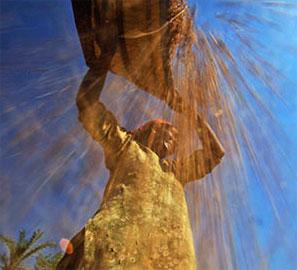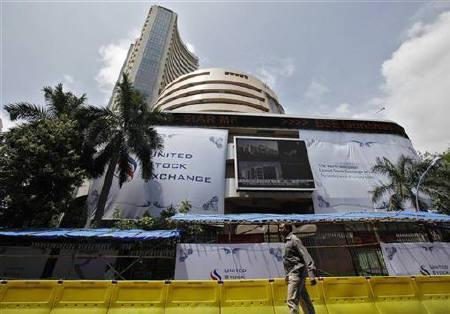Laxity in enforcing KYC and allied norms suspected; money laundering gaps also on probe panel’s mindThe role of global exchanges floated by the Financial Technologies group has also come under the government’s scanner.

Several
investors are said to be holding positions on the Multi Commodity
Exchange, while the same investors were offered similar positions on
international exchanges floated by the Financial Technologies group, to
take arbitrage advantage. While these facilities were offered by
brokers, the government is looking at whether there was any laxity on
the part of these overseas exchanges floated by the FT group regarding
Know Your Clients (KYC) or other processes.
If such linkages are found, that would be also considered violation of the foreign exchange and money laundering laws.
“The
government is now looking at pare trades in FTIL-controlled exchanges
NSEL, MCX and also exchanges owned by it outside India,” said a
government official. The FT group had floated Bahrain Financial
Exchange, Singapore Mercantile Exchange and Dubai Gold and Commodity
Exchange. All these three have been offering gold contracts.
An
FT spokesperson said, “We’ve not received any communication from any
authorities/regulators on such investigations and, hence, cannot
comment.”
A sector official said investors and traders having
positions abroad without the knowledge of the Indian authorities had
been happening and these also hold positions in other names, with
US-based Comex and the London Metal Exchange being common destinations.
In those exchanges, Indian authorities have no say but they are
investigating this.
Officials in the know said one of the
high-powered working groups constituted by the government on the NSEL
crisis, headed by the RBI deputy governor, was looking into the
possibility of money laundering among firms trading on this exchange,
MCX and also exchanges in foreign lands controlled by FTIL. "All these
possibilities are within the realm of the committee and working groups
constituted by the government on August 26 and we are looking at the
matter from every possible issue and involving all sister-concerns of
NSEL," a senior official said.
The chain of exchanges, domestic
and global, are under the scanner of other regulators as well, following
the forward Markets Commission (FMC)’s warning to the NSEL board that
their ‘fit and proper’ status was at risk. The warning was given by the
regulator last week, after NSEL defaulted on its commitment to make the
first week’s agreed payout.
A former regulator told Business
Standard, “Once the promoter loses s status as a fit and proper person
to run the exchange, other regulators have to reconsider if promoters of
the entities regulated by them have the same promoter that have lost
this status. Global regulators generally follow.” So, if the NSEL
promoters lose their fit and proper status there, the commodity, stock
and power exchanges set up by the same promoters might face similar
action.
A source in FMC said, “The decision to withdraw the fit
and proper status on the NSEL board of directors is under consideration
and task forces appointed by the government will also look into it, as
it has implications for other regulators, too.”
 The
government on Friday raised the import tariff value of gold to $461 per
ten grams and of silver to $803 per kg as prices of the precious metals
touched all-time high this week.
The
government on Friday raised the import tariff value of gold to $461 per
ten grams and of silver to $803 per kg as prices of the precious metals
touched all-time high this week. Several
investors are said to be holding positions on the Multi Commodity
Exchange, while the same investors were offered similar positions on
international exchanges floated by the Financial Technologies group, to
take arbitrage advantage. While these facilities were offered by
brokers, the government is looking at whether there was any laxity on
the part of these overseas exchanges floated by the FT group regarding
Know Your Clients (KYC) or other processes.
Several
investors are said to be holding positions on the Multi Commodity
Exchange, while the same investors were offered similar positions on
international exchanges floated by the Financial Technologies group, to
take arbitrage advantage. While these facilities were offered by
brokers, the government is looking at whether there was any laxity on
the part of these overseas exchanges floated by the FT group regarding
Know Your Clients (KYC) or other processes. Planning
Commission deputy chairman Montek Singh Ahluwalia said a cut in Plan
expenditure could be considered while finalising the Revised Estimates.
Asked whether it was proposed that Plan expenditure be cut, he said: “If
we are asked to do so, we will cooperate. Discussions usually start
around November. The finance ministry has said the 4.8 per cent target
for fiscal deficit is sacrosanct.”
Planning
Commission deputy chairman Montek Singh Ahluwalia said a cut in Plan
expenditure could be considered while finalising the Revised Estimates.
Asked whether it was proposed that Plan expenditure be cut, he said: “If
we are asked to do so, we will cooperate. Discussions usually start
around November. The finance ministry has said the 4.8 per cent target
for fiscal deficit is sacrosanct.”


